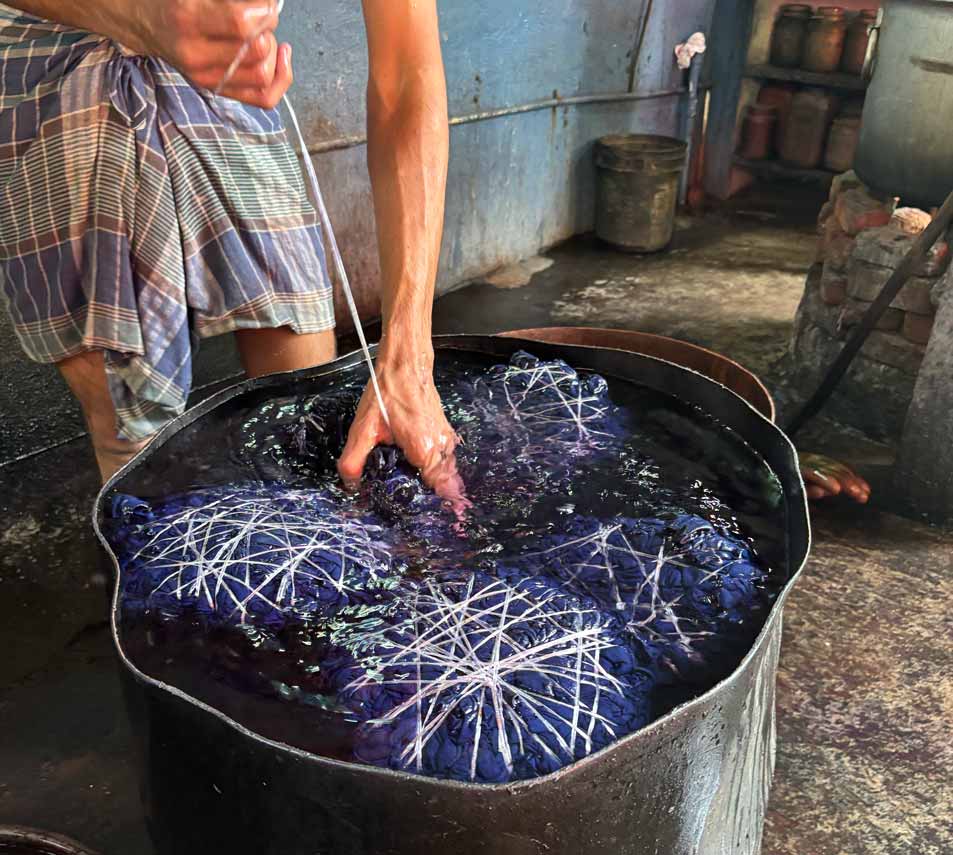The Art and Precision of Tie-Dye
July 1ST, 2025
Tie-dye is a centuries-old technique that continues to captivate people of all ages with its bold patterns and bursts of color. While it became a cultural icon in the 1970s, its roots run much deeper in Indian textile traditions. At its core, tie-dye is a resist-dyeing process—areas of fabric are bound tightly so that dye cannot penetrate. The way the fabric is tied determines the unique patters that emerge once the bindings are removed.
In Gujarat, one of the most intricate forms of this art is called bandhani (from the word bandh, meaning "to tie"). It involves tying thousands of tiny points with thread, often using the tip of a fingernail or a small needle to create minute knots. The result is a delicate dotted design that feels almost printed, but is entirely done by hand.

For pieces like the Anandi Jacket and the Deepti Overalls, the tie-dye may appear spontaneous, but it's far from random. The process begins by laying out three yards of fabric on the floor. The fabric is then gathered precisely and tied into a compact, disc-like bundle using strong thread. This bundle is then dipped into dye, allowing the color to seep into the fabric disc. Once dry, the thread is carefully removed and the fabric unfurled, revealing a stunning, almost painterly pattern—completely shaped by hand, guided by experience and intuition.

Once the fabric is ready, it's carefully cut and sewn with precision. In the cooperatives, each woman stitches the entire garment from start to finish—an approach that's quite different from factory production lines, where workers typically endlessly repeat a single task. Here, artisans are skilled in every part of the process: collars, sleeves, cuffs, hems, and piping/cording. Completing a whole piece gives a deep sense of accomplishment—and ownership.

After the garment is sewn, it's passed along to the embroidery artisans, who take the piece home to work on the embroidery. From the very beginning, MarketPlace was founded on the principle of work-from-home flexibility, allowing women to earn an income while managing household responsibilities. It's a model that values their time and their realities.

And finally, with the garment complete, the artisan who sewed and embroidered it signs the hangtag—proudly owning her work and sharing her name with the person who will wear it. It's not just a signature; it's a symbol of dignity, craftsmanship, and connection.

